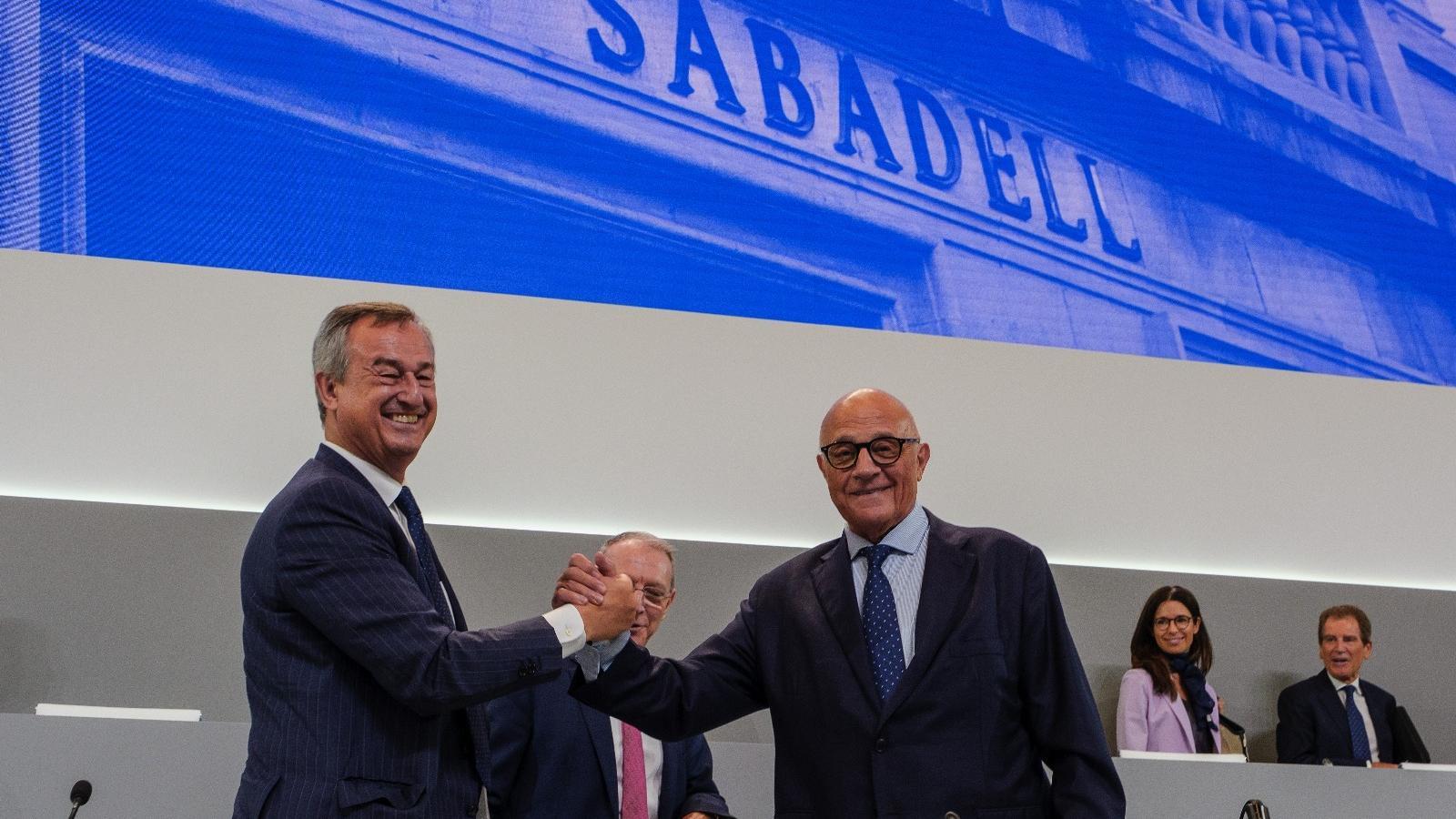Why did BBVA's takeover bid for Banc Sabadell fail?
In addition to economic and financial factors, there are political and social factors that have influenced the failure of the final outcome of the Basque bank's offer for the Catalan entity.


BarcelonaAfter 17 months of battle, BBVA's takeover bid for Banc Sabadell has failedThe big question everyone is asking is: why? It has even surprised the Valles-based bank. Analysts and experts cite a number of reasons, and not all of them are financially related. Other reasons are political, social, and communication-related. All of this has led to BBVA failing to even achieve a 30% stake in the Catalan bank, which would have allowed it to attempt to take control of Sabadell. These are some of the reasons analysts give.
Launching a takeover bid just before an election
BBVA wasn't very subtle when it came to launching its takeover bid. It's true that it launched the takeover bid just after the British network Sky News reported on the attempt to reach a negotiated solution with Sabadell. The problem is that on May 9 of last year, when it stirred up the markets with its takeover bid, there were only three days left until the Catalan elections. It was a poor start. Virtually the entire parliamentary spectrum criticized it. The norm in banking is for agreements, not hostile takeover bids. This was the last of its kind. It was the former Banco de Bilbao (today BBVA) in Banesto in 1987 and it failed.
Having little support from institutions and the business world
At no point has BBVA garnered significant support from institutions, especially those in Catalonia and other regions where Sabadell is strong, such as Valencia. It made efforts with public relations campaigns, but failed to attract them. The problem was that all Catalan business and economic organizations rejected the transaction from the outset. They turned their backs on it. Something similar happened with the Catalan and Spanish governments, which even called for an unprecedented public consultation to gather objections to the transaction on grounds of public interest. In fact, after receiving approval from the National Commission on Markets and Competition (CNMC), the executive imposed a ban on a merger for the first three years, provided the takeover bid goes through.
A bank with involved shareholders
Despite the influence of institutional investors, such as funds and other entities, BBVA did not fully take into account the influence of Sabadell shareholders, who are also customers. Eighty percent of retail investors are customers and had their shares deposited at the bank. This was reflected when The bank reported that only 2.8% of this type of shareholders, which represent 1.1% of the total capital, had decided to join the takeover bid. BBVA issued many financial messages without taking the sociopolitical context into account, while Sabadell often addressed itself "to its own people." Furthermore, in the midst of the takeover bid, the Valles-based bank, in another of its defensive moves, returned its headquarters to Sabadell, After almost eight years in Alicante.
An offer that didn't work out.
At no point did BBVA succeed in selling the merits of its offer. Initially, it was offered in shares and partly in cash, which was a mistake because it meant small shareholders would have to pay tax on their capital gains. Then, it increased the offer by 10%, investing entirely in securities. But it was short-sighted, as analysts from the outset predicted the offer should be between 20% and 30% higher. The proof was the performance of the stock market, which reflected the expectation, first, of a better offer and, later, the possibility of a second takeover bid, possibly at a higher price. But that's history now.
